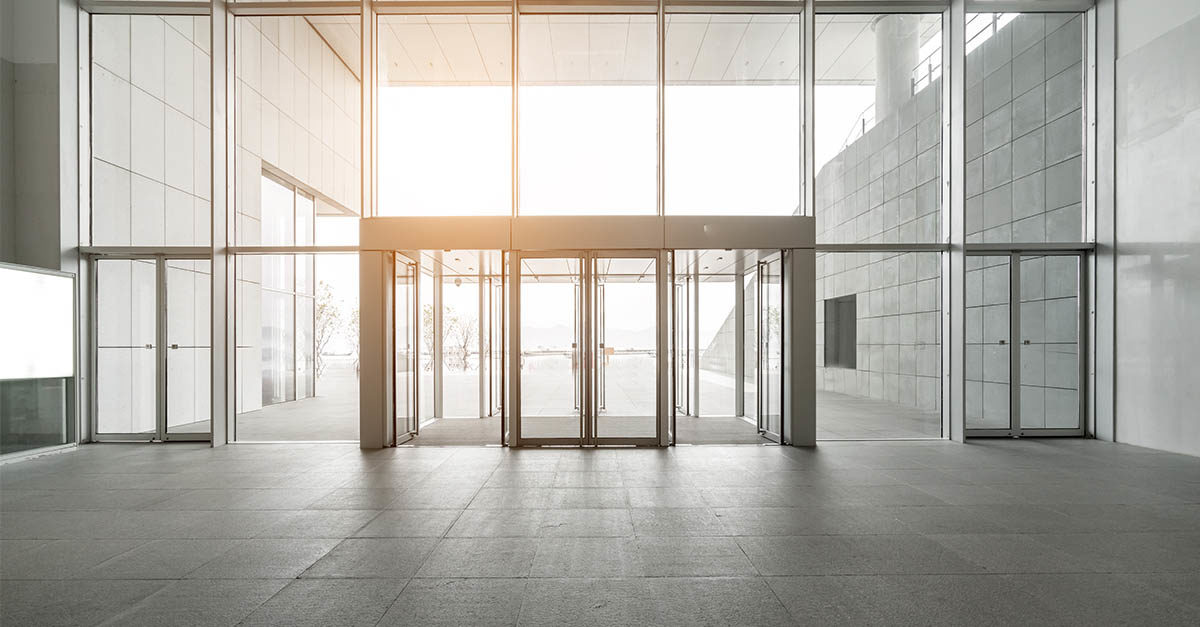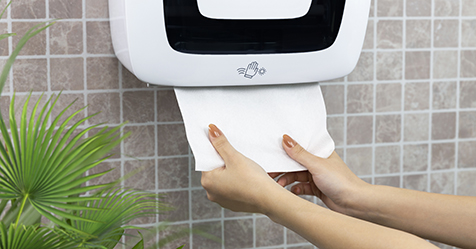As some states begin to ease shelter-in-place restrictions and many shuttered nonessential businesses begin to reopen, our nation’s journey toward our “new normal” has begun. Of course, with COVID-19 still present, it’s a scary time for everyone involved, including building occupants and staff. If you manage a building’s cleaning and disinfection program, here are some guidelines to help you protect people and minimize the spread of SARS-CoV-2, the virus that causes COVID-19.
Step 1: Pre-work
- Inspect the building: As the late John Walker once said, “The difference between a ruin and a building in use is the janitor.” This holds true for many of the buildings that have sat empty for the last few weeks or months—they have also been without their cleaning crew. With this in mind, step one is to inspect the building. A thorough inspection should include looking for areas where mold may have grown (e.g., in the restrooms, kitchens, on walls and in HVAC systems), and surfaces that may have been damaged. Moldy and damaged surfaces should be addressed right away including remediation or replacement if necessary.
- Review applicable (and reputable) guidelines: Below are several U.S. Centers for Disease Control and Prevention (CDC) and Environmental Protection Agency (EPA) resources to get you started:
- General cleaning and disinfecting
- Guidance for cleaning and disinfecting public spaces, workplaces, businesses, schools and homes
- Guidelines and resources to reopen facilities and public spaces
- Interim guidance for businesses and employers to plan and respond to coronavirus disease 2019 (COVID-19)
- Schools, daycare centers, offices or other facility that do not house people overnight
- Institutions of higher education.
- Confirm funding/budget: Ensure you have the budget for the required cleaning products and tools, as well as staff required to implement the proper cleaning protocol.
Step 2: Update policies, procedures and protocols
In February, I wrote about how clear and robust policies and procedures are needed to maintain a high-quality cleaning and disinfecting program. This is not only true during times of enhanced concern, but also in the regular day-to-day operations. If there was a silver lining to our current situation, it’s that the importance of cleaning and disinfection is now more widely understood. Below are the fundamental pieces needed to run a high-quality and effective cleaning and disinfection program.
- A written cleaning program policy: Cleaning program policies should outline how often procedures will be reviewed and updated, what procedures should be in place, and the frequency of and situations when employees will receive training and feedback on procedures.
- Clear and detailed everyday preventative procedures: A strong cleaning program has written procedures in place that specify cleaning processes for different areas in your facility.
- Each procedure should include what surfaces need to be cleaned, who is responsible for each area, and the products to be used to clean each surface.
- Other product details should include the directions for use, the contact (or dwell) time, and details on how to avoid cross-contamination.
- Procedures should be updated each time a new product is introduced, or a best practice is identified.
- Include public health basics such as washing hands, staying home when sick and the responsibility of building occupants to help the cleaning and disinfecting team reduce the spread of germs. This should be aligned with the occupants’ management. Actions, such as putting up posters like this example from the CDC, can go a long way to support the work of the cleaning staff.
- Outbreak preparedness procedure: Ensure you have outbreak preparedness procedure in place for when viruses, like SARS-CoV-2, may be present your facility. The outbreak preparedness procedure should be separate from everyday preventative cleaning procedures and cover the extra measures that need to be taken. This includes details on the microbial threat and how it is spread, helping employees understand how to identify the signs and symptoms of the illness of concern, knowing the correct personal protective equipment (PPE) to wear, and additional changes such as products used, frequency of cleaning and disinfecting, or the surfaces that should be disinfected.
- Spotlight on products: Make sure that disinfectants have EPA-approved claims against pathogens that cause the illnesses of concern in your facility. EPA’s list N is a great resource to determine if a product is approved for use against the SARS-CoV-2 virus. The list is updated regularly, but if a disinfectant you use isn’t on the list, check the manufacturer’s website, or contact the manufacturer directly. Given product shortages faced by many manufacturers right now, you may need to switch to a new product. If this is the case, it is even more important to ensure all disinfectants are EPA-registered, approved for use against SARS-CoV-2, and that staff are adequately trained on proper and safe use.
- Educate, train, and engage staff: Ensure cleaning staff are adequately trained on your facility’s cleaning and disinfecting procedures and the outbreak preparedness procedure. Competency should be verified on the use of the products.
Step 3: Execute and recognize
- Reconfirm the funding/budget based on updates procedures and protocols: Adjust the budget created in step one, as needed.
- Do regular check-ins with staff: Make sure staff are meeting the expectations of the program and ask them for regular feedback on how things are going. Adjust procedures and protocols as necessary, as per outlined in the program’s policy.
- Bring awareness: Put all the hard work into practice and help the cleaning and disinfecting team shine as occupants start to reenter the building. One way to help do this is to send a letter to building occupants to share efforts or share the program with leadership to bring visibility to all actions taken to protect employees’ health and safety.




